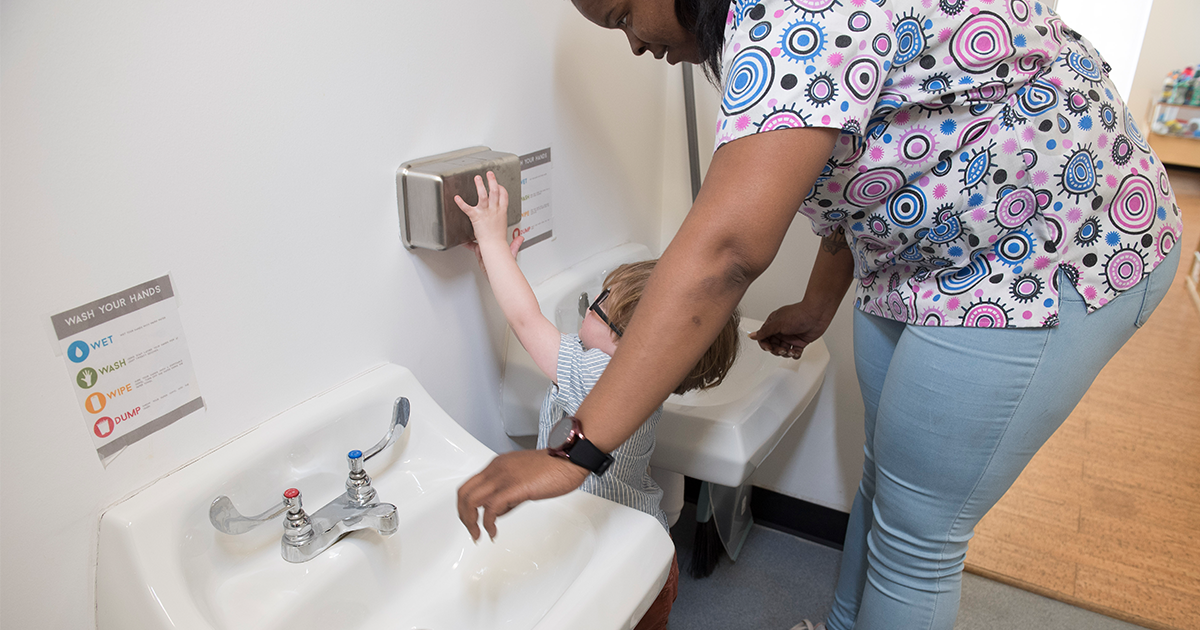 Today is Health Equity Day, an opportunity to explore how child care plays an instrumental role in ensuring that all are afforded the opportunity to attain their highest level of health. We know that children’s health is shaped by their environments—where they live, what they eat, how much they play, and if they have access to medical and dental care. We also know that not every child has the same opportunity to grow up healthy.
Today is Health Equity Day, an opportunity to explore how child care plays an instrumental role in ensuring that all are afforded the opportunity to attain their highest level of health. We know that children’s health is shaped by their environments—where they live, what they eat, how much they play, and if they have access to medical and dental care. We also know that not every child has the same opportunity to grow up healthy.
What Are Some Factors that Contribute to Inequity?
- Some children do not have insurance, so if they are sick, they are not likely to get care or medicine until the problem gets worse.
- Some children don’t have enough food to eat and others only have access to foods that are high in fat and sugar. Foods that are high in fat and sugar can lead to diabetes, heart disease, hypertension and some cancers.
- Some children don’t have safe spaces to play; others might live in places where the weather makes it difficult to exercise or play outside.
- Some children live in rural communities where there are not enough doctors or dentists to receive regular care, even if they have insurance or cash to pay for it. The Affordable Care Act (ACA) has helped many children and families access basic health coverage, but efforts to repeal the ACA may put many back where they started—unable to afford emergency, sick and preventative care that keeps children safe and healthy.
While child care centers and family child care providers alone can’t solve some of the systemic issues, like access to medical providers in their communities or access to affordable health care, there are many ways that child care does help children build healthy habits.
What Can Child Care Do?
Child care settings can reduce some of the barriers to leading a healthy life for children by:
- Preventing infectious disease: Making sure that children and child care staff or family child care providers are immunized and practice good prevention measures helps keep everyone healthy. However, doing so is not just good practice—it can help keep those who have barriers to health care from experiencing serious hardship. For example, a cold is a minor inconvenience for most of us but for those without insurance, it is costly—it could mean further infection, time lost from work for parents, and trips to the emergency room. It also means that children are happy, healthy, and ready to learn.
- Providing healthy meals: Many children eat most of their meals in child care settings, but for some children, what they eat at child care is the only food they eat all day. With proposed cuts to SNAP and WIC, this problem is likely to be more prevalent. Providing foods that are healthy, balanced and full of vitamins and minerals can help their brains develop so they are ready to learn. The meal pattern requirements of the Child and Adult Food Program (CACFP) ensure that children have access to balanced, healthier meals. By offering reimbursement to programs that can show that they meet the program’s requirement, providers can also afford higher quality food.
- Having active play opportunities: Little bodies cannot sit still all the time. Having a safe, supervised place to play can help them develop gross motor skills, fine motor skills, practice social emotional skills (oops, I’m sorry I ran into you!), and increase their focus when it’s time to sit and learn. Not all children live in places or spaces that are safe to play. Others might not have much time at home before bed time. With parents working long hours, there might not be enough time to have outside time before dinner, book reading, and bed time. Active play is also important in preventing diseases. Children that are not active as children are more likely to grow up to be inactive adults, which leads to diseases like diabetes, heart disease, hypertension, and some cancers. Starting and building those habits early in life can set healthy habits they can carry through the rest of their lives.
We know that there are health disparities across this country—Blacks, Hispanics and American Indian/Alaska Natives have poorer health than their White counterparts. By ensuring that all child care settings have good disease prevention practices, serve healthy meals, and have time and space for children to play, we can reduce some of the barriers that stand in the way of their achieving children’s optimal health. Child Care Aware® of America is committed to supporting policies and practices at federal state and local levels that build the healthiest child care communities possible.






